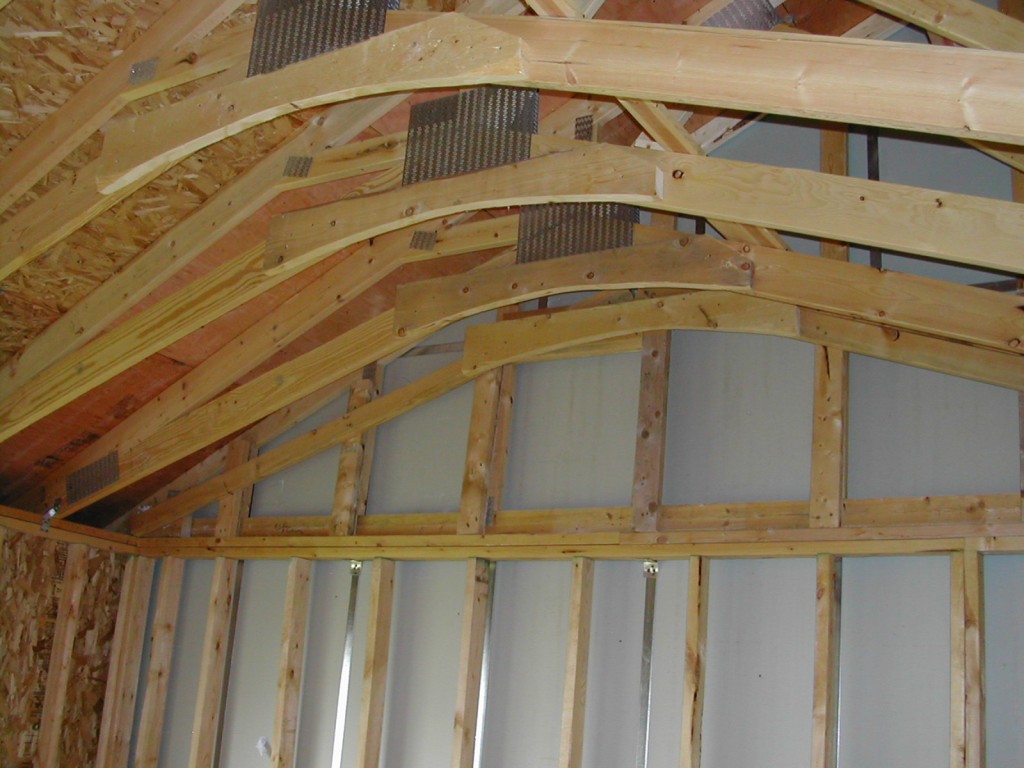A vaulted ceiling is a great way to make a space feel bigger. With the new economy, smaller homes are becoming more desirable to Americans due to their low cost to construct, maintain, and condition. Our houses may be shrinking but our expectations for great, inspiring spaces to live are growing. So, we need to continually look for ways to efficiently add flair to these new homes. One way to do that is with a vaulted ceiling.
Definition
What exactly is a vaulted ceiling? For this discussion, we are referring to any ceiling that isn’t flat. Meaning, there isn’t one single, horizontal plane across the ceiling. Technically, there are several different types of volume ceilings and the vaulted ceiling is one of them. Here is a list of a few of the possible volume ceiling types…
- vaulted ceiling – ceiling angles up to a peak
- barrel vault – a radius connects two angled ceiling planes
- tray ceiling – ceiling steps up to a higher level…once or multiple times
- domed ceiling
A Vaulted Ceiling Feels Bigger
One of the great things about a vaulted ceiling is the feeling it gives you when standing in the space. If you have two rooms of the same exact size and one has a vaulted ceiling and one a flat, you will immediately notice the bigger feel of the vaulted room. Trust me, I have done this. In my days as a builder, I have built the same plan multiple times and it always amazes me how much bigger the home feels with volume ceilings.
Cost
A vaulted ceiling can be installed in a new home rather inexpensively, especially if designed with roof trusses. For a 13 x 16 room, you can typically install a standard vaulted ceiling for $1500 or so. This includes the extra cost for…
- Vaulted roof trusses – typically require more connections
- Drywall – there is more drywall board required and will add scaffolding for hanging and finishing
- Insulation – a vaulted ceiling will require an insulation type other than blown in cellulose. The cellulose will slide down the angle leaving the ceiling improperly covered.
- Rough Carpentry – requires a little more effort from the carpenter to make sure the vault lines are straight and drywall backers (support at the wall/ceiling angles) are in place for the vaulted ceiling
Alternatives
One alternative to using a vaulted ceiling is to raise the overall ceiling height. By adding an additional foot to the height of the first floor walls of a home, you increase the perception of the size of the space. And the best part about raising the first floor ceiling height (sometimes called raising the plate height by builders) is the cost. On the average home in the U.S., you can add an additional foot to the entire first floor wall height for $1500-$2000.
Negatives
The only real negative associated with a vaulted ceiling is the potential increase in costs to heat the space. Because you are adding more volume, there is more air to condition. And as we know from physics class (probably the only thing I can remember), warm air rises. So a higher ceiling makes heating more difficult. A ceiling fan can help with this by circulating the warm air up near the ceiling back down.
If you are planning your dream home, you may want to consider a vaulted ceiling or maybe even a taller wall height. These new home options can really make an impact and ultimately, provide great value for your money. If you think you might want to build your own home, check out all of our free videos, articles and digital resources. With a little help you will save money and get exactly what you want.



